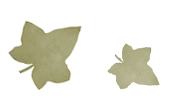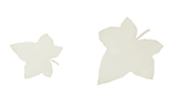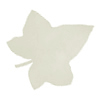


|
Herbal medicine is the medicine of the people. It is simple, safe, effective, and free. Our ancestors knew how to use an enormous variety of plants for health and well-being. Our neighbors around the world continue to use local plants for healing and health maintenance, and you can too. In your first lesson, you learned how to "listen" to the messages of plant's tastes. And you discovered that using plants in water bases (teas, infusions, vinegars, soups) - and as simples - allows you to experiment with and explore herbal medicine safely. In this lesson, we will learn how to make effective water-based herbal remedies and talk more about using simples. Tea for You? Teas are a favorite way to consume herbs. Made by brewing a small amount of herbs (typically a teaspoonful to a cup of water) for a short time (generally 1-2 minutes), teas are flavorful, colorful drinks. Herbs rich in coloring compounds - such as hibiscus, rose hips, calendula, and black tea - make enticing and tasty teas. They may also contain polyphenols, phytochemicals known to help prevent cancer. Since coloring compounds and polyphenols are fairly stable, dried herbs are considered best for teas rich in these. Herbs rich in volatile oils - such as ginger, chamomile, cinnamon, catnip, mint, lemon balm, lemon grass, lavender, bergamot, and fennel, anise, and cumin seeds - make lovely teas, which are effective in easing spasms, stimulating digestion, eliminating pain, and inducing sleep. Since much of the volatile oils are lost when herbs are dried, fresh herbs are considered best for teas rich in these, but dried herbs can be used with good results. I enjoy a cup of hot tea with honey. But teas fail to deliver the mineral richness locked into many common herbs. A cup of nettle tea, for instance, contains only 5-10 mg of calcium, while a cup of nettle infusion contains up to 500 mg of calcium. For optimum nutrition, I drink nourishing herbal infusions every day.Infusion for Me!An infusion is a large amount of herb brewed for a long time. Typically, one ounce by weight (about a cup by volume) of dried herb is placed in a quart jar, which is then filled to the top with boiling water, tightly lidded and allowed to steep for 4-10 hours. After straining, a cup or more is consumed, and the remainder chilled to slow spoilage. Drinking 2-4 cups a day is usual. Since the minerals and other phytochemicals in nourishing herbs are made more accessible by drying, dried herbs are considered best for infusions. (See experiment 2.) I make my infusions at night before I go to bed and they are ready in the morning. I put my herb in my jar and my water in the pot, and the pot on the fire, then brush my teeth (or sweep the floor) until the kettle whistles. I pour the boiling water up to the rim of the jar, screw on a tight lid, turn off the stove and the light, and go to bed. In the morning, I strain the plant material out, squeezing it well, and drink the liquid. I prefer it iced, unless the morning is frosty. I drink the quart of infusion within 36 hours or until it spoils. Then I use it to water my houseplants, or pour it over my hair after washing as a final rinse, which can be left on. My favorite herbs for infusion are nettle, oatstraw, red clover, and comfrey leaf, but only one at a time. The tannins in red clover and comfrey make me pucker my lips, so I add a little mint, or bergamot, when I infuse them, just enough to flavor the brew slightly. A little salt in your infusion may make it taste better than honey will. Having trouble finding herbs in bulk at your local health food store? Try ordering online: * Gaia's
Garden Simple Messages When we use simples (one plant at a time), we allow ourselves an intimacy that deepens and strengthens our connections to plants and their green magic. There are lots of interesting plants, and lots of herbalists who maintain that herbal medicine means formulae and combinations of herbs. But I consider herbs as lovers, preferring to have only one in bed with me at a time. When I use one plant at a time it is much easier for me to discern the effect of that plant. When I use one plant at a time and someone has a bad reaction to the remedy, it is obvious what the source of the distress is, and usually easy to remedy. When I use one plant at a time, I make it easy for my body to communicate with me and tell me what plants it needs for optimum health. I even go so far as to ally with one plant at a time, usually for at least a year. By narrowing my focus, I actually find that I learn more. Coming UpIn our next lesson we will learn more about the difference between nourishing, tonifying, stimulating/sedating, and potentially-poisonous plants; how to prepare them; and how to use them. In the following installments we will explore the difference between fixing disease and promoting health, how to apply the three traditions of healing, and how to take charge of your own health care with the six steps of healing.
Make and drink a quart of nourishing herbal infusion made with stinging nettle, oatstraw, red clover, raspberry leaf, or comfrey leaf. If you wish, flavor it with mint. On the same day, make a tea from the same herb, using dried herb. Compare and contrast the colors, flavors, and sensations. Experiment Number Two Make an infusion of stinging nettle, oatstraw, red clover, raspberry leaf, or comfrey leaf, using one ounce of dried herb as usual. At the same time, make a quart of "brew" using the same herb, but fresh, not dried. To make it fair, use 4 ounces of fresh herb. After one hour of steeping, look at both jars, taste and compare/contrast. Repeat three more times at hourly intervals.Minerals are released slowly into water. They darken the color of the water and give it a dense, rich taste. Oil-soluble vitamins float to the top and make a thin glaze of swirls. Experiment Number Three Buy, or grow, a tasty, aromatic herb, like ginger, peppermint, or rosemary. For this experiment you will need one tablespoon of fresh herb, and one teaspoon of the same herb dried. Place the fresh herb in a cup or mug and the dried herb in another. Fill both to the top with boiling water. After one minute, taste, smell, compare the teas. Wait another minute and compare again. Then wait five minutes and try each one again. Experiment Number Four Make a tea with aromatic seeds - anise, caraway, coriander, cumin, fennel, or fenugreek. Use a teaspoon of seeds in a cup of water. At the same time, brew some using a tablespoon of seeds per cup. After a minute, taste, smell, contrast. Repeat in five minutes, then in thirty minutes, then after an hour, then after four hours. Teas and infusions of dried seeds are almost the same.Further Study 1. Drink 2-4 cups of nourishing herbal infusion for a month and see if your health changes in any way. Best if you don't drink coffee or tea during this month. 2. Choose a green ally to focus on this year. 3. Read Healing Power of Minerals by Paul Bergner. 4. Read about stinging nettle and oatstraw in my book Healing Wise. 5. Write out the botanical names of the herbs you used in making your teas and your infusions.
* Learn more about essential oils in plants. Grow several plants rich in essential oils. * Learn more about tannins. Make an oakbark infusion.
* This is part 2 in an 8 part series by Susun S. Weed. Part 1 | Part 2 | Part 3 | Part 4 | Part 5 | Part 6 | Part 7 | Part 8 | * Legal Disclaimer: This content is not intended to replace conventional medical treatment. Any suggestions made and all herbs listed are not intended to diagnose, treat, cure or prevent any disease, condition or symptom. Personal directions and use should be provided by a clinical herbalist or other qualified healthcare practitioner with a specific formula for you. All material on this website/email is provided for general information purposes only and should not be considered medical advice or consultation. Contact a reputable healthcare practitioner if you are in need of medical care. Exercise self-empowerment by seeking a second opinion. Susun Weed Visit
Susun Weed at: www.susunweed.com and www.ashtreepublishing.com Vibrant, passionate, and involved, Susun Weed has garnered an international reputation for her groundbreaking lectures, teachings, and writings on health and nutrition. She challenges conventional medical approaches with humor, insight, and her vast encyclopedic knowledge of herbal medicine. Unabashedly pro-woman, her animated and enthusiastic lectures are engaging and often profoundly provocative. Susun is one of America's best-known authorities on herbal medicine and natural approaches to women's health. Her four best-selling books are recommended by expert herbalists and well-known physicians and are used and cherished by millions of women around the world. Learn more at www.susunweed.com This article is © copyright Susun S. Weed 2006 - Republished here with kind permission. |
|

Gaia's Garden Library
Non Fiction Section : Gaia's Garden Herblore | Susun S. Weed Articles | Articles and Musings
Fiction Section : Short Stories & Prose| As Told
By Cat | Public Domain Texts| Poetry
Shop | Library | Gallery | Forum | Contact | Links








